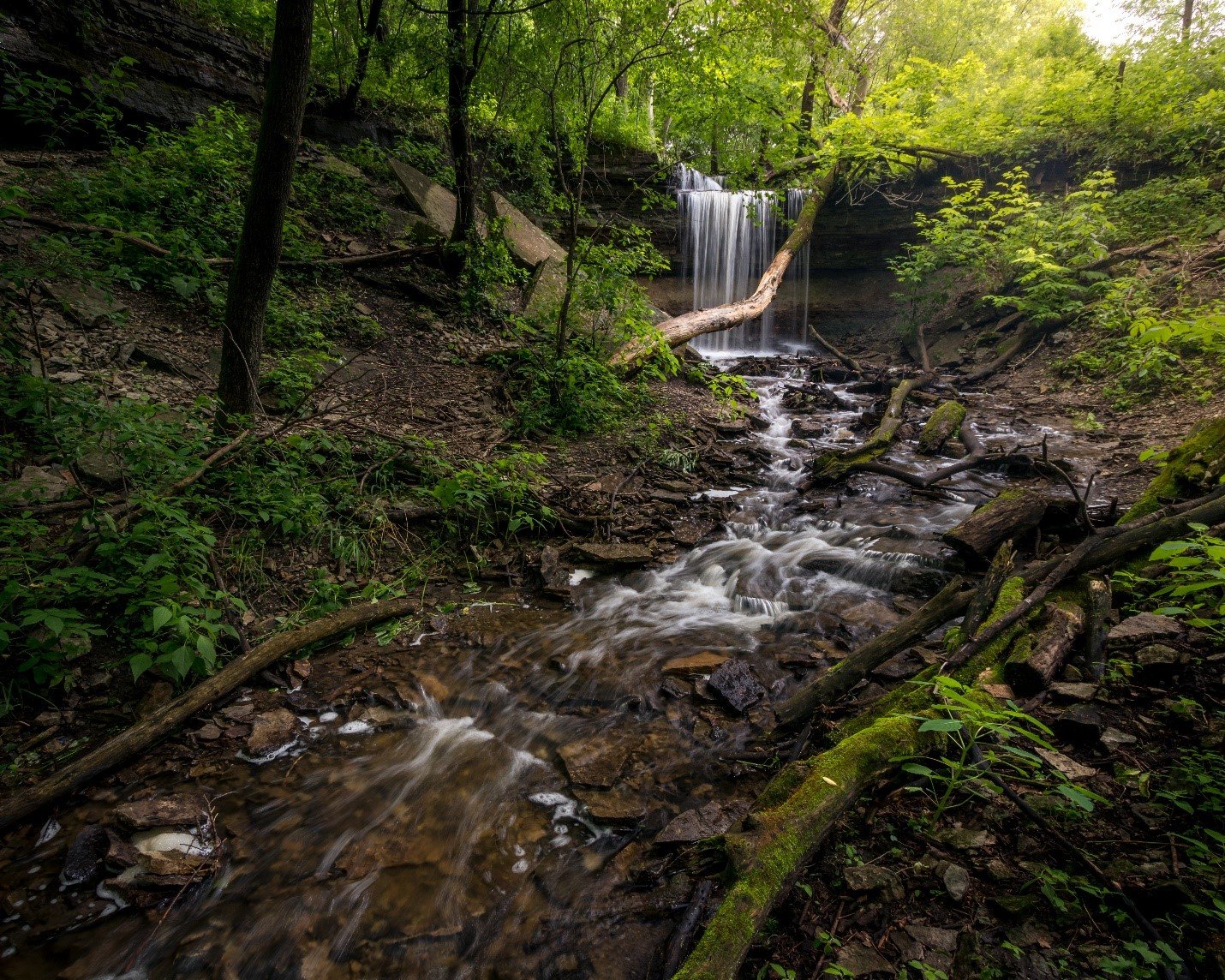Resources
Water Conservation
Native Plants
Notice yellow, dry grass around town? Weeds and dirt patches in lawns? Non-native grasses need nutrients. Instead, switch to pollinator-friendly lawns with native plants. Why? Plenty of reasons:
Native plants have deep roots and can retain and infiltrate more water. With some initial care, they can save water and money, replacing water-hungry turfgrass.
Your soil will thrive when roots penetrate the soil, reducing compaction and allowing better nutrient absorption by plants.
Native plants infiltrate more water into the ground, reducing runoff. This results in healthier rivers and lakes with less chemicals and litter flowing through storm drains.
Native plants sequester more carbon in soil due to their deep root systems, reducing carbon dioxide in the atmosphere.
Native plants require less or no mowing, saving time and money.
Your new pollinator-friendly yard will require less fertilizer and pesticide, saving you money and keeping groundwater clean.
Introducing native plants to your lawn will increase pollinator and songbird habitat, attracting interesting visitors to your garden. Additionally, it's a great way to help protect biodiversity in your area.
Rain Barrels
A rain barrel is a container that is attached to the downspout of your house or building, which captures rainwater before it flows out onto your lawn or pavement. Typically, a spigot is installed at the bottom of the barrel, which can be used to fill a watering can and water your flower gardens. Rain barrels are an eco-friendly and cost-effective way to conserve water and reduce your water bill.
Yard Care
Fall is a beautiful season, but it brings along some environmental concerns that we should be aware of. As leaves fall from trees, they have the potential to cause damage to our waterways by clogging storm drains and leading to the growth of algae. However, instead of seeing this as a problem, we can turn it into an opportunity to nourish our gardens. Shredded leaves can be a valuable resource for enriching the soil in our garden beds or delivered to a municipal compost site. Additionally, we should be mindful of other pollutants like oil, paint, antifreeze, and fertilizers that can enter waterways through storm drains. By cleaning up spills and using phosphate- and chlorine-free soap when washing vehicles, we can all contribute to keeping our rivers and lakes clean this fall. Let's work together to make a positive impact on our environment!
Salt Use
During winter, residents of Minnesota use salt to melt ice on their sidewalks and streets, ensuring safety and accessibility. However, the use of salt poses a threat to the environment, as it dissolves and carries down storm drains, polluting rivers, lakes, and even drinking water. Additionally, the corrosive nature of salt impacts sidewalks, driveways, and bridges. As a result, many cities are now training their street crews to use the minimum amount of salt or brine required to keep streets clear, in an effort to reduce the negative impact on the environment and infrastructure.
Here’s what you can do to reduce salt use and simultaneously protect the quality of your water:
Manually removing snow and ice before using salt will increase effectiveness.
Consider using sand instead of salt for traction and to prevent slips. Sand works at any temperature, while salt is only effective above 15°F. For extra effectiveness, try a 1:1 ratio of sand and salt.
During winter, roads can be slippery, even with sand and salt. Drive slowly and leave plenty of space for plow drivers to work.
Use less salt and be patient; apply less than 4 pounds per 1,000 sq ft (e.g., average parking space = 150 sq ft). Allow salt time to work before adding more.
Sweep up excess salt or sand on dry pavement to prevent damage and contamination of nearby water sources.
Save Money Doing Laundry
Understanding the many ways our everyday actions directly affect local water sources can be challenging. Stormwater runoff and water consumption are two considerations in which urban communities can play a direct role. Our goal at Clean River Partners is to make information about clean water and sustainable practices available to the public, and one way you can conserve water at your home includes your laundry room.




